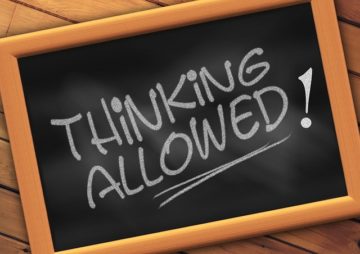Make up your mind, before you need to

In my job I follow a lot of news stories about horrific events. Once I’ve dissected the event for any lessons, however, I usually don’t think about it much. After all, there will be another attacker, or another disaster, to study tomorrow. Whether I’m just jaded or truly lack empathy I’m not sure, but I don’t think much about such things — except in the proper context.
I could do it in my sleep
Last weekend’s attack at the Gilroy Garlic Festival in California, however, resulted in something new for me: I had several dreams about the incident. Not nightmares, just simple dreams where I was present at the event. What’s odd is that each dream presented a different sequence of actions in which I was actively involved as an unarmed defender.
I was, in essence, visualizing the attack and my possible responses to it. I’ve done a lot of these kinds of “wargaming” scenarios, but never in my sleep! Why this time, this event? I’m not sure, but unlike most dreams I remember all of the details, down to how the suspect cut through the fence surrounding the venue (which he actually did, according to news reports.)
This little sleep anomaly might be because, in the last two Hump Day Reading Lists, I’ve talked about the power of visualization and its importance to self defense. Apparently I took my own advice!
Visualization as a performance enhancer
I think visualization especially important when responding as an unarmed defender to an armed attacker. When you don’t have a stand-off weapon, such as a firearm, technique and timing are your major tools.
Anything you can do to throw off the attacker’s aim is likely to have a positive effect. Whether you hit him in the head with a fire extinguisher or simply tackle him, his ability to hurt others will be significantly reduced. Choosing the right moment, the one which reduces your risk and increases the odds of success, is a matter of observation and understanding.
Those are things which can be greatly helped by good visualization before the event.
Always look for the opening
When planning a physical response to an attacker, it’s important to look for openings where he’s most vulnerable. In the Gilroy attack the shooter apparently reloaded at least once in an attempt to clear what onlookers described as a “jam”. I’ve noticed this same thing in a very large percentage of shooting attacks.
A few years ago there was an attack at a mall in my own state. I knew several of the responding officers, who told me that the shooter tried reloading several times, discarding full magazines in the process, in an attempt to get his rifle working again.
Any reload, any malfunction, is an excellent opportunity to stage a counter attack. Unless you know what those look like, and have decided beforehand to take advantage of those opportunities, the opening will likely pass you by. Visualizing what that looks like, what the attacker will be preoccupied with, and how you’d use that vulnerability to your advantage, is something you can do ahead of time.
Even today. How about right now?
Isolation is a losing strategy
I know there are some readers who are thinking “just don’t go places where you can’t carry a gun. Problem solved.” The reality of life, though, is that there are many wonderful and unique places to go where guns aren’t allowed. It’s virtually impossible to carry a defensive firearm in any foreign country, for instance, and even in the United States there are many places where guns are simply forbidden.
My own state is very liberal on where we can carry a firearm; in fact, it’s probably the least restrictive state in that regard. Even so, private venues are free to prohibit them — and can enforce their wishes with metal detectors.
I suppose one could just avoid going anywhere or seeing anything fun, beautiful, interesting, or educational, but to me that would be a pretty depressing life to lead. Aside from true hermits, then, just about everyone needs to think through their options and actions should they be faced with an attacker in a public space.
Which brings us right back to visualization
This visualization is really quite simple: think of a plausible scenario (a place you’d go, and an attack that could believably happen.) Think about what the attacker would be doing, how he’d be armed, where’d he’d be moving, and how the people around you would react.
Then think about how you could respond to stop (or at least diminish) the attack. Would you have your firearm? What would be the likely target distance? Are there intervening obstacles? How about people jostling you as they rush away from the shooter, or responding officers who might think you’re the bad guy?
If you don’t have a firearm, what opportunities would the attacker give you? What weapons can you improvise in that environment? If none, what physical techniques would you use?
These are the kinds of things that a good visualization can include. You want to see in your mind what’s happening, who’s doing it, where you are, and what you can do to affect the outcome of the incident.
Because sometimes dreams can turn into real nightmares, and it’s better to have some semblance of a plan before that happens.
-=[ Grant ]=-
P.S.: Registration is now open for my Threat-Centered Revolver course in Phoenix, AZ this November. We’ve already received a number of sign-ups, so you should reserve your spot today. You can learn more (and sign up) at this link.
Listen to this blog – and subscribe to it on iTunes by clicking this link!
- Posted by Grant Cunningham
- On August 2, 2019

